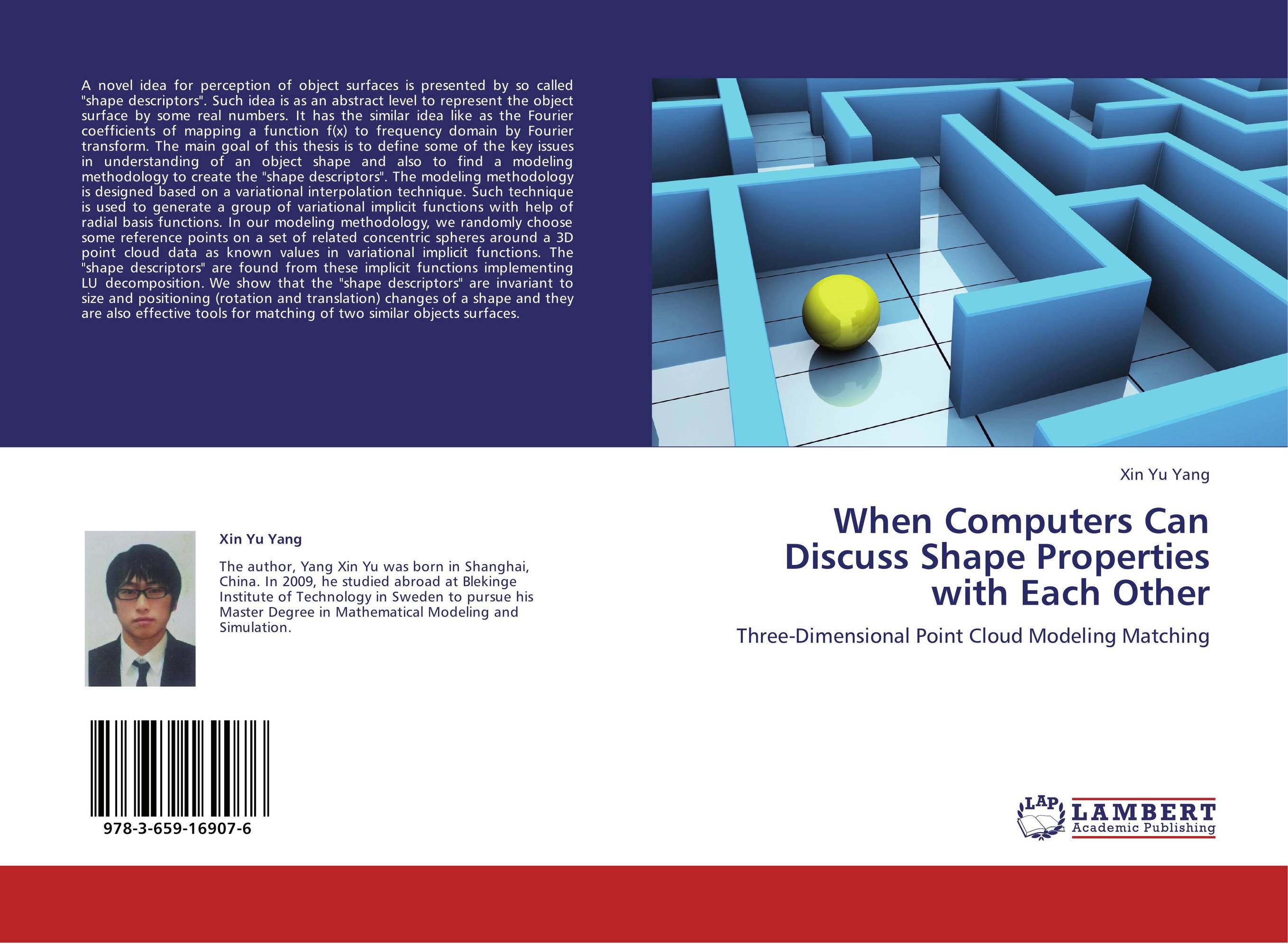| Поиск по каталогу |
|
(строгое соответствие)
|
- Профессиональная
- Научно-популярная
- Художественная
- Публицистика
- Детская
- Искусство
- Хобби, семья, дом
- Спорт
- Путеводители
- Блокноты, тетради, открытки
When Computers Can Discuss Shape Properties with Each Other. Three-Dimensional Point Cloud Modeling Matching

В наличии
| Местонахождение: Алматы | Состояние экземпляра: новый |

Бумажная
версия
версия
Автор: Xin Yu Yang
ISBN: 9783659169076
Год издания: 2012
Формат книги: 60×90/16 (145×215 мм)
Количество страниц: 60
Издательство: LAP LAMBERT Academic Publishing
Цена: 29790 тг
Положить в корзину
| Способы доставки в город Алматы * комплектация (срок до отгрузки) не более 2 рабочих дней |
| Самовывоз из города Алматы (пункты самовывоза партнёра CDEK) |
| Курьерская доставка CDEK из города Москва |
| Доставка Почтой России из города Москва |
Аннотация: A novel idea for perception of object surfaces is presented by so called "shape descriptors". Such idea is as an abstract level to represent the object surface by some real numbers. It has the similar idea like as the Fourier coefficients of mapping a function f(x) to frequency domain by Fourier transform. The main goal of this thesis is to define some of the key issues in understanding of an object shape and also to find a modeling methodology to create the "shape descriptors". The modeling methodology is designed based on a variational interpolation technique. Such technique is used to generate a group of variational implicit functions with help of radial basis functions. In our modeling methodology, we randomly choose some reference points on a set of related concentric spheres around a 3D point cloud data as known values in variational implicit functions. The "shape descriptors" are found from these implicit functions implementing LU decomposition. We show that the "shape descriptors" are invariant to size and positioning (rotation and translation) changes of a shape and they are also effective tools for matching of two similar objects surfaces.
Ключевые слова: Implicit Function, shape descriptors, variational interpolation



